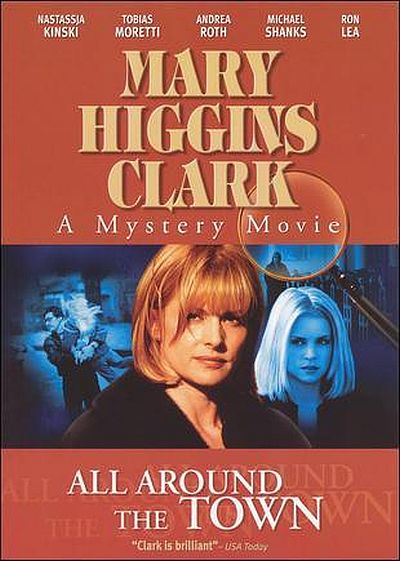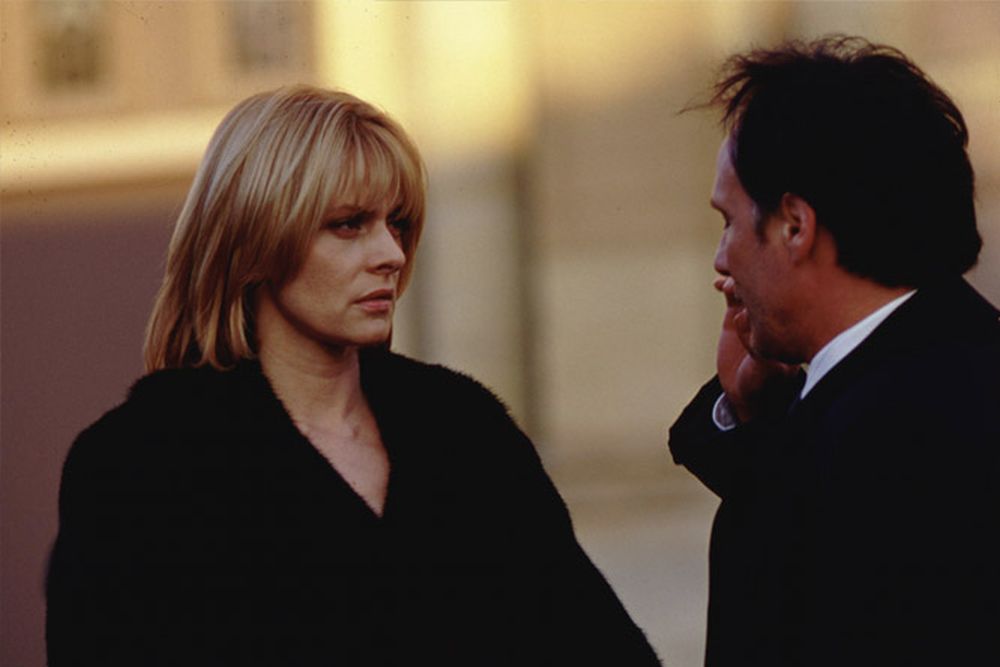Dir: Paolo Barzman
Star: Kim Schraner, Andrea Roth, Michael Shanks, Nastassja Kinski
I will raise my hand and say I have never heard of Mary Higgins Clark, the author on whose book this is based. Turns out she’s something of a Big Deal, with Wikipedia telling me her books have sold over 80 million copies, and her debut is now in its seventy-fifth printing. So it’s clearly my ignorance that’s the issue here. However, that said, there’s nothing here that would lead me to be interested in picking up any of her works, as this made for television adaptation [it looks like around seventeen of her novels have made their way to the screen, mostly the small one] has a story that strains disbelief, even by the standards of potboiler fiction.
After a lurid opening pre-credit sequence, telling us this is one of the “Mary Higgins Clark Mysteries,” (but which feels like it has strayed in from late-night Skinemax) things kick off in 1985 New Jersey, when four-year-old Laurie Kinmount is abducted from the street outside her home. Fast forward to the present day, where Laurie (Schraner) and her sister Sarah (Roth) are dealing with the sudden death of their parents in a car accident. Turns out Laurie was found two years later, with little or no memory of what happened, and has been dealing with the mental scars ever since. While she’s smart and is now studying English at college, she has particular difficulty forming relationships with men.
 This proves a problem with regard to her English teacher, Alan Grant, who is receiving hot and steamy letters from a mysterious unknown woman – much to the chagrin of his wife, Karen (Kinski). Alan eventually realizes the handwriting is a match for Laurie, but when confronted, she angrily denies it, in an argument that draws too much public attention. Which is unfortunate, because the next day, the teacher turns up stabbed to death, with a knife taken from the Kinmount house, and Laurie has no memory of what happened. For it turns out her psyche has reacted to the trauma of the abduction by splintering into multiple personalities. One, Debbie, is based on her four-year-old self, another, Kate, is a super protective persona inspired by her mother… and as Margaret Cho once said, then there’s the ho, Leona. Guess which one was writing the notes, and lurking outside Alan’s window?
This proves a problem with regard to her English teacher, Alan Grant, who is receiving hot and steamy letters from a mysterious unknown woman – much to the chagrin of his wife, Karen (Kinski). Alan eventually realizes the handwriting is a match for Laurie, but when confronted, she angrily denies it, in an argument that draws too much public attention. Which is unfortunate, because the next day, the teacher turns up stabbed to death, with a knife taken from the Kinmount house, and Laurie has no memory of what happened. For it turns out her psyche has reacted to the trauma of the abduction by splintering into multiple personalities. One, Debbie, is based on her four-year-old self, another, Kate, is a super protective persona inspired by her mother… and as Margaret Cho once said, then there’s the ho, Leona. Guess which one was writing the notes, and lurking outside Alan’s window?
It’s up to her sister, who is conveniently a public prosecutor, along with forensic psychologist Justin Donnelly (Shanks), to figure out the truth about what happened. Meanwhile, the creepy husband and wife responsible for the abduction more than fifteen years previously, who now run a self-help empire, are not too happy for anyone to be probing into the mental barriers they constructed in their victim. I have to say, I think it’s this aspect of the plot which made me most skeptical. Piling it on top of the multiple personalities, seemed like several bridges too far, and especially since it seemed very underdeveloped. didn’t add much to the overall progress of the film. Much the same goes for Laurie’s stalker-esque boyfriend. Maybe these elements played better in the book?
Despite Kinski being front and center on the cover, and first named in the credits, that’s likely because she’s the only name in this most people will recognize. While it turns out to be pivotal, her role is relatively minor, playing the wronged wife, who runs a travel agency and is highly suspicious of her husband. Karen comes over as rather whiny – especially considering she’s too busy with her career to be with her husband during the week, I’d have said a little more sympathy towards him was likely deserved. Of course, the unaddressed question is the inevitable one: if you were married to Nastassja, would you really contemplate infidelity?
As the actual lead, Schraner is fairly impressive. While she could certainly be accused of chewing the scenery on a number of occasions, it’s not uncalled for in the circumstances, given her character’s obvious mental instability. Watching her switch between the various personalities is kinda fun, to the point that I wished they’d gone further down this road, perhaps even having Gollum-like conversations between them. Oh, well. The rest of the cast are reasonable enough, and it’s the script which represents the main problem, since I can’t say any of the twists turned out to be particularly surprising or credible.
It just about managed to retain my interest, though I will confess to having dozed off right at the very end, and had to rewind the final two minutes, in order to catch the “thrilling” conclusion. Which was little or more plausible than the rest of the film, to be honest. Still, as a trashy (albeit chaste – this was obviously made for network TV, complete with pauses for commercials) example of pulp fiction, it was entertaining enough. Though it’ll hardly make its way onto the DVD sleeve, “I’ve seen worse,” is likely my overall conclusion here.

